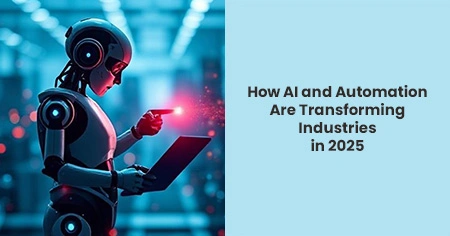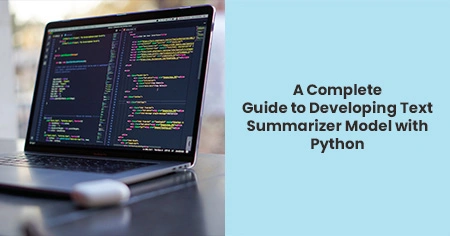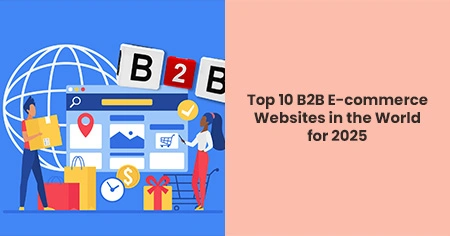Enter the 2023 generative AI boom! Now almost anyone has access to ‘intelligent bots or software.’ This is not only transforming industries at the operations level but also at the talent level.
With access to generative AI like ChatGPT and Claude, some business owners go from non-techies to building functional solutions. Doctors now do their research faster than they used to.
The industry transformations are so rapid to the point that even big corporations are finding it challenging to keep pace and adjust. However, if you’ve made it to this piece, we got you!
Here’s how AI and automation are transforming industries in 2025. Find out how to keep up with future transformations with little to no frustrations — right at the end!
7 Ways AI and Automation Are Transforming Industries
Employees work smarter now
Employees, especially those in the service industry, are automating repetitive tasks and spending the saved time on improving business strategies or upskilling.
Initially, most employees could only automate tasks like data collection, cleaning, and storage. AI has now made it possible to expand the automation scope. They can automate whole workflows, including those that involve data analysis and decision-making.
Most of the advanced AI-powered automation tools are available through cloud-based solutions, meaning the employees can even set up real-time automations to take care of communication, resource sharing, and even project tracking.
For instance, SEO analysts no longer have to monitor keywords manually. They can combine the power of SERP API tools and AI to run a whole autonomous keyword monitoring and decision making system. Meanwhile, they’d use AI-powered platforms to analyze their skill level and keep learning.
More industries are embracing hyper automation
Hyper automation is the concept of automating interrelated processes whenever you have the opportunity to. This way, you end up with a network or series of resource or data flows and task automations, drastically reducing the need for manual interventions in the business.
To achieve hyper automation, there's a need to go beyond automation and AI. You bring in other technologies like IoT (Internet of Things), robotics, and low-code tools to automate even the most complex processes.
Look at the manufacturing industry. Factories are automating production lines by equipping them with smart sensors and AI-driven quality checkers. Robots also come in, minimizing packaging wait-time and reducing errors.
With such a smooth and less human involved task transition in the manufacturing industry, businesses enjoy faster turnaround times, improved productivity, and have the opportunity to affordably scale.
Smart, self-operating agents are here
Some call them autonomous agents — they are self-operating or self-managed systems that require little to no human intervention.
Autonomous agents are mostly effective in industries that process data or work on tasks that are heavily dependent on data.
The agents collect, clean, and analyze data. They then employ machine learning and AI to independently reason and make-decisions. And, they can do this even when they are handling real-time data, 24/7.
With over 60% of financial services consumers showing interest in AI-powered financial education and advice, more financial institutions are deploying autonomous agents. These agents not only educate but they also help with fraud detection, loan applications, and customer service.
Deploying autonomous agents in your business supercharges real-time analytics and decision making, allowing you to respond to market changes better. Plus, these agents are continuous learners, resulting in smarter feedback as new data flows in.
AI-driven and automated decision intelligence is growing fast
Decision intelligence is a practical framework or system that determines how fast and accurately you get to make decisions.
Before AI, decision intelligence was mostly powered by human expertise and complemented by basic data processing and analytics automations. AI improves this framework through large data (structured or unstructured) analytics and real-time data processing.
leads to significant competitive advantages. This is especially evident in the finance and e-Commerce space.
AI and automation-driven models help with risk management and investment decisions in finance. They process both historical and current data, forecasting trends which helps investors make better and timely decisions.
For e-Commerce business owners, the ability to have systems that crunch real-time data helps with customer experience and price adjustment, enhancing financial security and customer satisfaction.
AI is enhancing efficiency-driven automations
Efficiency-driven automations are present across industries to improve time and resource utilization. However, most of the automations do not include reasoning, making them human-reliant.
AI and machine learning brings reasoning to these automations. From logistics to energy management, industries like health and retail are significantly saving on operational costs.
AI is capable of analyzing delivery routes data, managing inventory, and analyzing data from various supply chains. With these capabilities, it is easier to tell optimal delivery routes, forecast demand, and more.
When it comes to energy management, AI can monitor real-time energy usage and adjust systems like heating, cooling, and lighting to optimize energy consumption.
Industries are taking personalization to the next level
Picture being able to create a website that adjusts layouts, advertisements, and email content based on user interactions. AI and automation makes this possible by monitoring user behavior and adjusting the website to reflect the user’s current needs and interests, boosting engagement and sales.
Other than personalizing website layouts, industries like finance, retail, and e-Commerce are employing AI and automation to personalize marketing campaigns. They customize the campaigns to fit certain customer profiles and behaviors.
While implementing the campaigns, the marketing team collects customer data, including browsing history, preferences, and purchase behavior for analysis. Through AI analytics, they get to modify the campaign to fit particular customer segments, increasing conversions
Cybersecurity, supercharged by AI and automation
Cybersecurity is critical across industries, especially the finance, healthcare, energy, and telecommunication industry.
A cyber attack could cripple an industry globally, leading to chaos. That’s why AI and automation are being employed to spot what’s normal or malicious in various systems.
By proactively keeping tabs on past and current normal system usage patterns in real-time, AI-powered security tools can capture potential threats before they get worse.
Some tools have been able to capture zero-day exploits or threats, something traditional cyber security tools take time to achieve.
In addition to personalized campaigns, AI has been integrated into automated loyalty programs and real-time interactions like customer support. The AI models in use track the data of each participant in the loyalty program or caller, creating a personalized and relevant experience.
Besides capturing threats in time, current cybersecurity tools have been automated to ensure they respond in time.
For example, a tool may block a malicious IP or isolate certain devices. Then, it logs what it has done and generates a report to help the cyber security team with decision-making. This proves why companies that deployed AI-powered security tools saved over $2.22 million compared to those that did not.
Tips to Keep Up with Future Transformations and Adapt Smoothly
Overall, the seven transformations we’ve covered are the most popular across industries. Ignoring them may lead to operational inefficiency in your business, competitive decline, security and compliance risks, and workforce gaps.
Despite the need to keep up with change and adapt, you don’t have to rush into changing your systems. Here are tips to keep up with change and implement transformations in your business without disrupting your current work flows.
Cultivate a mindset of growth
AI and automation are not threats. They are tools to improve productivity and decision-making. So, encourage talent to experiment with AI and automation. This allows them to foster a culture of exploration and learning.
If you are still running legacy systems, create a separate team to help with testing out AI integrations and adapting your data to fit select AI models. Progressive adaption, unlike moving with rapid technology shifts, gives you the time to build confidence and identify scaling opportunities.
Align AI integration with industry-specific goals
Study what players in your industry are using AI and automation for. Understanding what’s already applicable or working saves you the time and cost of implementing AI and automation systems.
A good example is the service industry. Most players are embracing how AI and automation is transforming digital marketing. They prioritize investing in personalization-ready marketing tools.
Develop change management frameworks
Simply because everyone wants to be ahead in the AI game doesn’t mean you must rush. Have a change management framework in place first before starting to bring in AI and automation transformations.
Put together in-house expertise to review current systems and record what’s working. Then, involve employees to have a say in what they find reasonable to change. Lastly, come up with a phase adoption structure that aligns with your company’s readiness.
Embrace building high-impact partnerships
Attend tech summits, AI keynote events and other unveilings to network with active AI and automation solutions developers. The developers will give you insights into what’s currently effective.
Partner with AI startups when possible. They’ll give you access to cutting-edge AI models without having to bear the full cost of research and development, reducing the pressure on your business resources.
Closing Words
AI and automation are redefining how industries handle their daily operations.
From workforce augmentation to enhanced personalization, industries like finance and retail are changing how they execute tasks and interact with their customers. And, you also have a chance to do the same.








